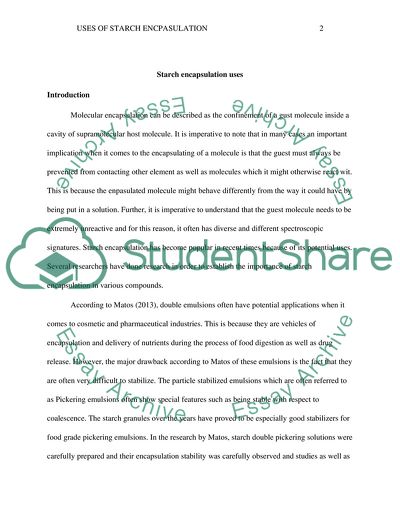Cite this document
(Preparation and Starch Encapsulation Uses Term Paper Example | Topics and Well Written Essays - 3000 words, n.d.)
Preparation and Starch Encapsulation Uses Term Paper Example | Topics and Well Written Essays - 3000 words. https://studentshare.org/chemistry/1821462-preparation-and-uses-of-starch-in-encapsulation
Preparation and Starch Encapsulation Uses Term Paper Example | Topics and Well Written Essays - 3000 words. https://studentshare.org/chemistry/1821462-preparation-and-uses-of-starch-in-encapsulation
(Preparation and Starch Encapsulation Uses Term Paper Example | Topics and Well Written Essays - 3000 Words)
Preparation and Starch Encapsulation Uses Term Paper Example | Topics and Well Written Essays - 3000 Words. https://studentshare.org/chemistry/1821462-preparation-and-uses-of-starch-in-encapsulation.
Preparation and Starch Encapsulation Uses Term Paper Example | Topics and Well Written Essays - 3000 Words. https://studentshare.org/chemistry/1821462-preparation-and-uses-of-starch-in-encapsulation.
“Preparation and Starch Encapsulation Uses Term Paper Example | Topics and Well Written Essays - 3000 Words”. https://studentshare.org/chemistry/1821462-preparation-and-uses-of-starch-in-encapsulation.


